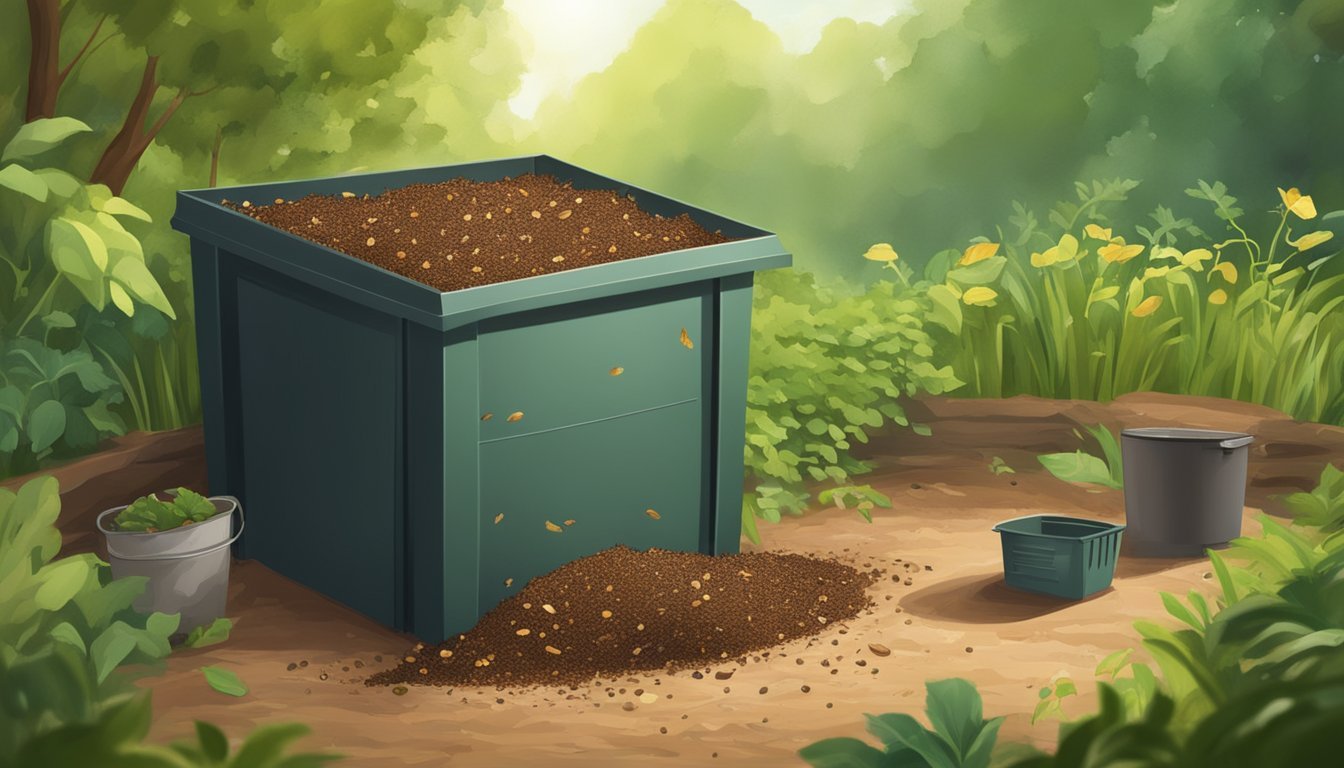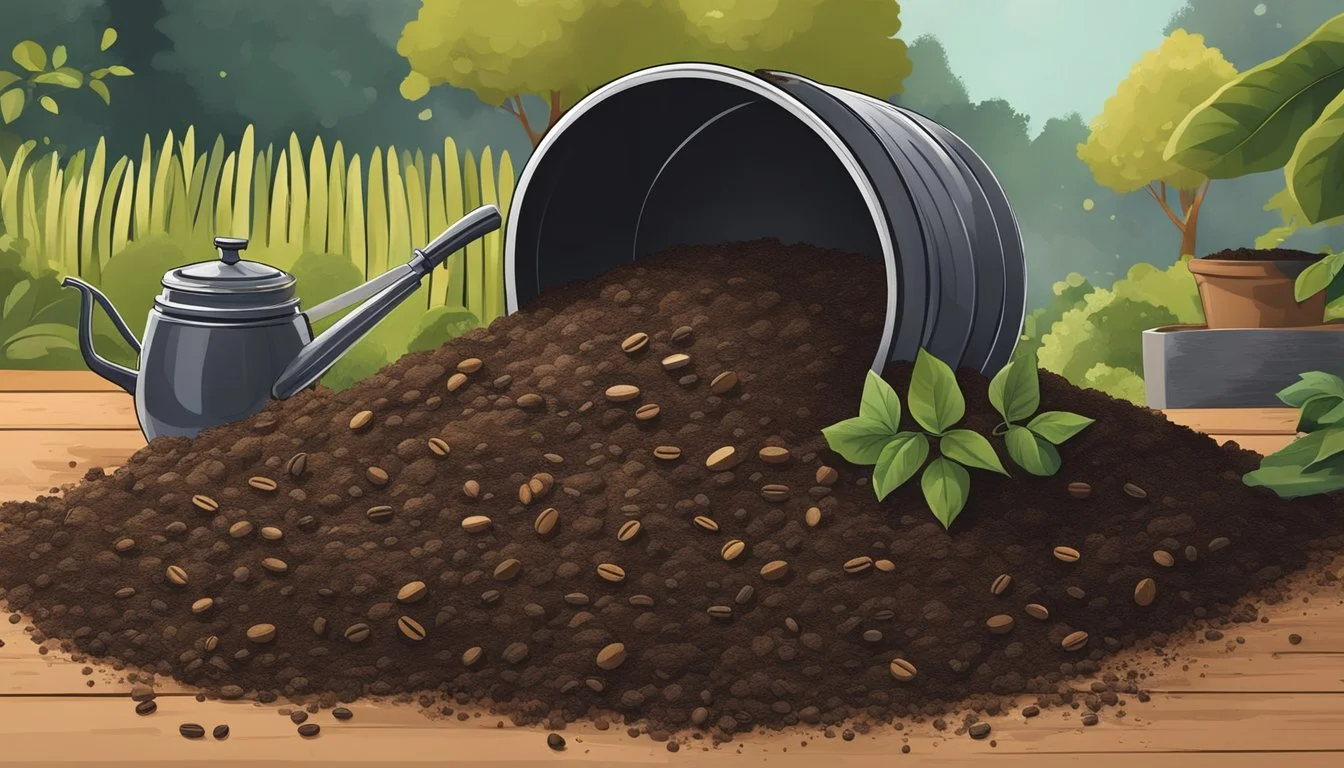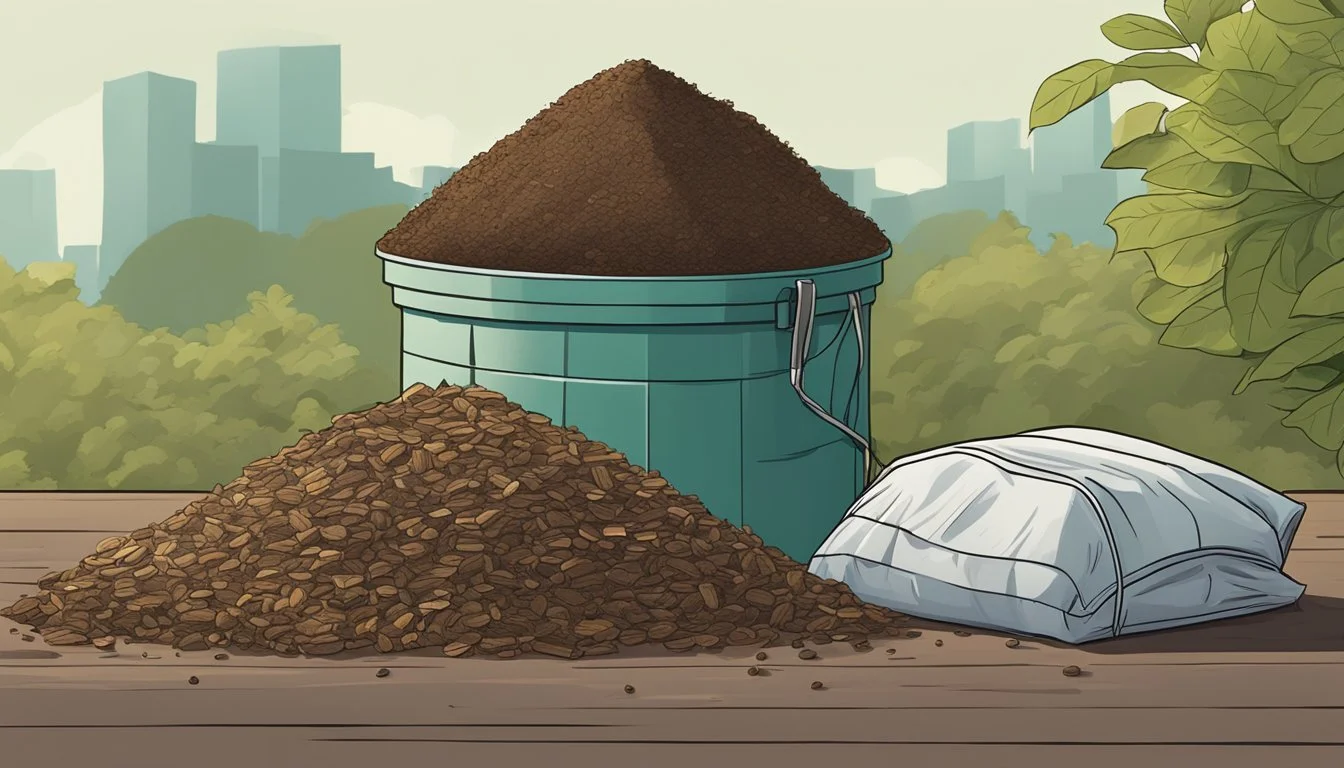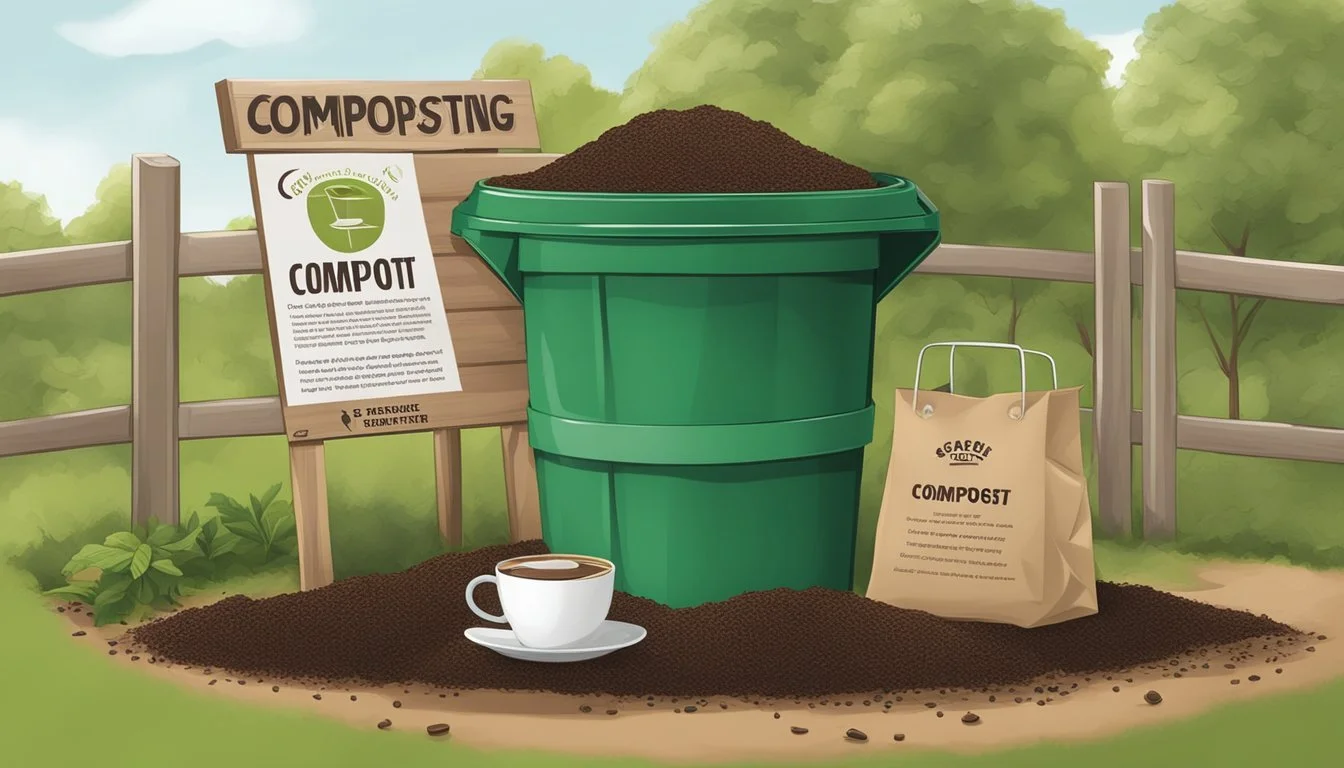Can You Compost Instant Coffee?
Unpacking the Facts on Coffee Waste Recycling
Instant coffee grounds are a versatile waste product that can be repurposed effectively through composting. The process involves the grounds being added to a compost pile, where they decompose to create a nutrient-rich additive for soil. The grounds are an excellent source of nitrogen, which is a key nutrient for the microorganisms that facilitate the breakdown of organic matter in compost. By participating in this cycle, instant coffee grounds can enrich compost and, ultimately, the soil it is meant to improve.
Composting instant coffee grounds is straightforward and requires minimal effort. Gardeners can add both used instant coffee grounds and the residual coffee left from the brewing process to a compost pile. Doing so enhances the soil's structure, fertility, and the health of plants without requiring extensive preparation or amendment of the compost materials. Unlike some kitchen scraps, coffee grounds do not need to be treated or processed before inclusion in a compost heap.
Integrating instant coffee grounds into compost is also a practical way of reducing kitchen waste that would otherwise end up in landfills. This practice supports the principles of reducing waste and recycling, contributing to overall environmental sustainability. Thus, the use of instant coffee grounds in compost not only provides gardens with beneficial nutrients but also aligns with eco-friendly waste management practices.
Understanding Composting
Composting is a natural recycling process that transforms organic material into nutrient-rich soil, essential for healthy plant growth. It involves managing the decomposition of organic matter, providing beneficial compost for gardening and landscaping.
Composting Basics
Composting requires a balance of green and brown materials which contribute to the decomposition process. Green materials are high in nitrogen and include kitchen scraps like vegetable peels and coffee grounds, while brown materials are high in carbon, such as leaves and shredded paper.
Green Compost Material: Grass clippings, fruit scraps, coffee grounds
Brown Compost Material: Dry leaves, branches, cardboard
A composting system can be as simple as a compost pile in a backyard or as complex as a specifically designed compost bin or tumbler which helps maintain optimal conditions for microorganisms to thrive.
Benefits of Composting
Soil Enhancement: Rich in nutrients, compost improves soil structure, texture, and aeration, and helps soil retain moisture.
Reduction in Waste: Composting diverts organic waste from landfills, significantly reducing methane emissions.
By incorporating both green and brown materials into a compost bin or pile and managing factors like moisture, temperature, and aeration, the decomposition process is optimized, leading to efficient composting and the production of valuable compost for gardening purposes.
Role of Coffee in Composting
Composting is enriched by the inclusion of coffee grounds, which supplement vital nutrients and have a unique role in optimizing compost blend.
Coffee as a Compost Ingredient
Coffee grounds are an excellent addition to compost piles because they are rich in nitrogen, a crucial element that fuels the growth of composting microorganisms. Nitrogen is an integral component of chlorophyll and is necessary for photosynthesis in plants. By adding coffee grounds to compost, they serve as a 'green' ingredient that complements 'brown' compost elements like dried leaves or cardboard.
Properties of Coffee Grounds
Coffee grounds contain several beneficial nutrients, including:
Phosphorus: Helps in root development and energy transfer within the plant.
Potassium: Essential for overall plant health.
Magnesium: Plays a vital role in chlorophyll production.
Iron: Necessary for many plant processes, including enzyme function.
Furthermore, coffee grounds have a granular texture that enhances soil structure, improving aeration and drainage while helping to retain water.
Impact on Soil pH and Structure
Contrary to popular belief, most used coffee grounds are not acidic; they are approximately neutral in pH, ranging from 6.5 to 6.8, making them suitable for most soils. However, unused coffee grounds can be acidic and may be beneficial for acid-loving plants. As a mulch, coffee grounds can suppress some plant diseases and slugs. Overall, they serve as a valuable soil amendment by adding organic matter, which improves soil texture and fertility, fostering robust plant growth.
Composting Instant Coffee
Instant coffee, while often enjoyed for its convenience, also has a place in the compost pile, contributing to a nutrient-rich soil additive ideal for various garden plants.
Instant Coffee Characteristics
Instant coffee is made from coffee beans that have been roasted, ground, and then freeze-dried or spray-dried to remove moisture. The resulting granules are water-soluble and known to contain varying amounts of caffeine and nutrients. It is this combination of characteristics that makes instant coffee a potential composting ingredient, much like its brewed counterpart, traditional coffee grounds.
Advantages of Instant Coffee in Compost
In a compost pile, instant coffee decomposes, releasing nitrogen which is essential for composting microorganisms. These microorganisms, in turn, break down organic materials into humus, a component critical to nutrient-rich soil. Moreover, instant coffee can slightly increase the acidity of the compost, benefiting acid-loving plants when the compost is used as a soil amendment.
Growth: Compost enhanced with instant coffee can support plant growth by providing a balanced array of minerals and nutrients.
Natural fertilizer: Using instant coffee as a component of compost is an efficient way to recycle it into a natural fertilizer.
When using instant coffee in compost, gardeners should consider the specific needs of the plants they intend to nurture. For instance:
Blueberries and hydrangeas thrive in more acidic soil, making compost with added instant coffee an excellent choice.
Tomatoes and roses, while less demanding of soil acidity, may still benefit from the added nutrients provided by compost with instant coffee.
It is advised to integrate instant coffee into compost sparingly to avoid excess caffeine in the soil, which could potentially harm sensitive plants. When added in moderation, instant coffee can be a beneficial component of a compost strategy, contributing to the health and vitality of a garden.
Composting Coffee Filters
Composting coffee filters is a straightforward way to reduce waste and enrich garden soil. It is important to use the correct type of filter to ensure the composting process is effective and beneficial for the garden ecosystem.
Coffee Filters as Compost Material
Coffee filters can indeed be added to compost piles as they are typically made from paper and are biodegradable. They provide carbon-rich material, balancing the nitrogen provided by food scraps and coffee grounds. Shredded paper can be added along with coffee filters to further maintain the carbon-nitrogen ratio crucial for healthy compost.
Benefits:
Improves compost structure
Balances carbon-nitrogen ratio
Caveats:
Should be free of synthetic materials
Dyed or bleached filters may contain undesirable chemicals
Choosing Compostable Coffee Filters
When selecting coffee filters for composting, look for natural, unbleached paper products. These types are generally considered safe and beneficial for composting. One should avoid filters made with synthetic fibers or those treated with chemicals, as they may not break down effectively and could introduce harmful substances into the compost.
To ensure compostability:
Use unbleached, natural paper filters
Avoid synthetic fibers and chemically treated filters
Tips for composting:
Tear or shred filters to speed up decomposition
Mix with other compost materials to aid aeration and break down
Enhancing Compost with Coffee Grounds
Coffee grounds can serve as a nutritious addition to compost, offering both acceleration in decomposition and the attraction of beneficial worms, while also deterring common pests.
Accelerating Compost Decomposition
Coffee grounds are a source of nitrogen, an essential component in the composting process. They have a carbon-to-nitrogen ratio of 20:1, which supports bacterial growth and helps to heat up the compost pile, breaking down organic matter more quickly. This can be particularly beneficial in bokashi composting systems, where microbes rely on nitrogen-rich materials to ferment organic waste. When adding coffee grounds to a compost pile or bokashi composter, ensure even distribution to avoid clumping which can slow decomposition.
Attracting Beneficial Worms and Repelling Pests
Worms are attracted to the gritty texture and nutrient content of coffee grounds. In vermicomposting systems, these grounds can be a substantial food source for worms, leading to a more productive worm bin. Conversely, the abrasive nature of coffee grounds is theorized to deter soft-bodied pests like slugs and snails. Furthermore, the presence of coffee grounds can discourage ants and other pests without using harmful chemicals, acting as a natural pest repellent. When introducing coffee grounds to a worm bin or garden, do so in moderation to maintain a balanced environment for the worms and plants.
Balancing Your Compost Pile
A successful compost pile requires attention to the carbon to nitrogen ratio and the management of moisture and aeration to ensure proper decomposition.
Maintaining Proper Carbon to Nitrogen Ratio
A compost pile should have a balance of carbon-rich "browns" and nitrogen-rich "greens." Carbon provides energy for the microorganisms, while nitrogen is essential for building the cell structure of new organisms. Ideally, the carbon to nitrogen ratio should be about 30:1. Examples of browns include:
Straw
Newspaper
Examples of greens include:
Food scraps
Lawn clippings
Used coffee grounds
Coffee grounds are a beneficial addition to the nitrogen component, adding to the required greens.
Managing Moisture and Aeration
Moisture and aeration are critical for composting as they support microbial life and hasten the decomposition process. A compost pile should be as moist as a wrung-out sponge. If the pile is too dry, beneficial microbes slow down, and if it's too wet, it can lead to odor and reduced aeration.
One should turn their compost regularly to maintain aeration, which is essential to keep the aerobic bacteria active and composting efficiently. The presence of pockets of air within the pile ensures that the materials break down effectively, without creating an anaerobic environment that slows down the process.
Common Questions About Composting Coffee
Composting is a useful process to reduce waste and enrich soil, and many people inquire about the suitability of incorporating coffee grounds into their compost piles. Coffee grounds are frequently utilized for their rich nitrogen content, which can enhance microbial activity and aid in the composting process.
Usage of Coffee Grounds
Coffee grounds are an excellent addition to compost because they are a source of nitrogen, which is a critical component for the microorganisms that break down organic material in a compost pile. They should be mixed with carbon-rich materials such as leaves or cardboard to maintain a balanced compost. Here's a simple representation of how coffee grounds should be incorporated:
Balance: Maintain a mix of 1 part coffee grounds to 3 parts carbon-rich materials.
Layering: Alternate layers of coffee grounds with carbon-rich materials.
Moisture: Ensure the compost pile is moist but not overly saturated.
Potential Attraction of Pests
While coffee grounds can be beneficial for composting, they may also attract certain pests like ants. However, this is typically not an issue if the compost is well-managed. The following are strategies to deter pests:
Regular Turning: Aerating the compost pile can discourage pests from settling.
Layering: Bury coffee grounds in the middle of the compost pile.
Caffeine Content: Some studies suggest that the caffeine in coffee grounds may actually help deter certain pests, but too much caffeine can be harmful to the compost microorganisms.
Safety and Precautions
When composting instant coffee, it is crucial to consider the safety of household pets and to manage the compost in a way that prevents the proliferation of mold and pathogens.
Keeping Pets Away from Coffee Compost
Cats and dogs can be sensitive to caffeine, which is present in coffee grounds, including those from instant coffee. Composting coffee remains should involve steps to ensure pets do not have access to the compost material, as ingestion can lead to caffeine toxicity. The following measures can be employed to safeguard pets:
Enclosure: Use a compost bin with a secure lid.
Location: Place the compost bin in an area out of pets' reach.
Preventing Mold and Pathogens
When incorporating instant coffee into a compost pile, one must be mindful to:
Aerate: Regularly turn the compost to allow oxygen circulation, which helps in preventing anaerobic conditions that could encourage mold growth.
Balance: Maintain a proper green-to-brown ratio (1:3) to ensure a healthy compost environment and reduce the risk of pathogens.
Coffee and the Environment
The environmental impact of coffee, from the waste generated by coffee shops to individual consumption habits, is significant. Effective waste management and mindful consumption can play a pivotal role in lessening the ecological footprint of our coffee habits.
Reducing Waste from Coffee Shops
Coffee shops can generate a substantial amount of waste, including organic material like used coffee grounds and packaging waste such as plastic and aluminum from coffee pods. Implementing a coffee ground composting program allows these businesses to divert organic waste from landfills, which is beneficial considering that coffee grounds are rich in nitrogen, an element that supports the composting process and subsequent soil health. Additionally, recycling or upcycling coffee packaging, particularly pods that often contain a mix of plastic and aluminum, can significantly reduce the environmental burden.
Composting programs: Coffee grounds are composted.
Packaging reduction: Minimizing use of plastic and aluminum.
Eco-friendly Coffee Consumption
Consumers play a crucial role in creating an eco-friendly coffee environment. By choosing to compost used coffee - including instant coffee - individuals help in enriching the soil with organic material and reducing landfill waste. Opting for coffee products packaged in biodegradable or recyclable materials, such as EcoPods that are designed to be compostable, is another step towards a more sustainable coffee consumption routine.
Composting at home: Adding coffee grounds to a compost bin.
Mindful pod disposal: Remove any foil or plastic before composting coffee pods.
By focusing on these eco-friendly practices, coffee enthusiasts can enjoy their brew while contributing to environmental conservation.
Supplementary Composting Materials
In a successful composting setup, balance between green and brown materials is essential. These additions help to create a nutrient-rich compost that is ideal for garden use.
Adding Nutrients with Green Compost Material
Green compost materials are rich in nitrogen, which is a critical component for composting microorganisms. They actively contribute to the heating process of the compost pile by providing necessary proteins for the microbes.
Common green materials include:
Vegetable scraps: they offer a diverse set of nutrients and decompose quickly.
Grass clippings: fresh clippings are high in nitrogen and help to accelerate the composting process.
Compost with coffee grounds: used coffee grounds are an excellent green material, adding nitrogen and a pleasant aroma to the compost.
Balancing with Brown Compost Material
While green materials add nitrogen, brown compost materials are rich in carbon, which is essential for compost aeration and structure. They ensure the pile has enough airflow and helps control moisture levels.
Typical brown materials include:
Sawdust: a carbon-rich material that should be used sparingly to prevent clumping and ensure proper air circulation.
Shredded newspaper or cardboard: these materials decompose slowly and offer structure to the compost mix.
By carefully balancing these elements within a compost setup, one can convert kitchen waste and yard refuse into a valuable soil amendment.
Advanced Composting Techniques
Advanced composting techniques enhance decomposition speed and efficiency and can be adjusted based on the scale and needs of the composter.
Innovative Composting Approaches
Vermicomposting involves using specific species of worms, such as red wigglers, to break down organic material. This method is optimal for indoor composting as it is odorless and space-efficient. A bokashi composter uses an anaerobic process to ferment kitchen waste, including instant coffee, before it is buried in soil or added to a compost pile to finish decomposing.
Compost Tumblers: These are sealed, rotating drums that provide aeration and mixing, leading to faster decomposition times.
Aerated Static Pile Composting: Aerates compost without turning, using a system of pipes that passively or actively blow air into the pile.
Advanced methods often require moderation to prevent issues like odor or pests and maintain a balance of green (nitrogen-rich) and brown (carbon-rich) materials.
Composting at Different Scales
Small-scale composting can be managed with simple compost bins or kitchen countertop containers designed for daily waste, including instant coffee grounds.
Large-scale composting systems incorporate more complex methods like windrow composting—long, turned piles that allow for greater volume—or in-vessel composting, which employs large, enclosed reactors for more control over environmental conditions. Such systems can efficiently handle the waste of entire communities or commercial enterprises, turning significant amounts of organic matter into valuable compost.











